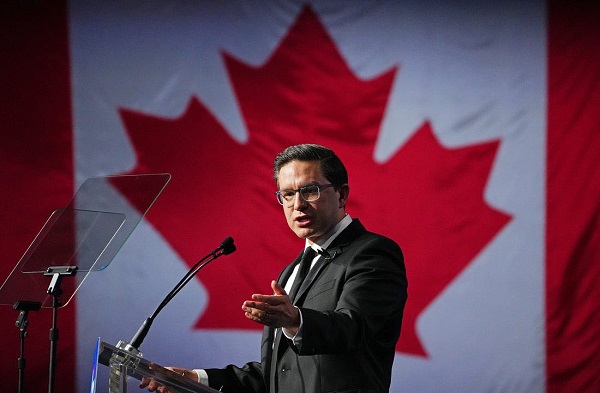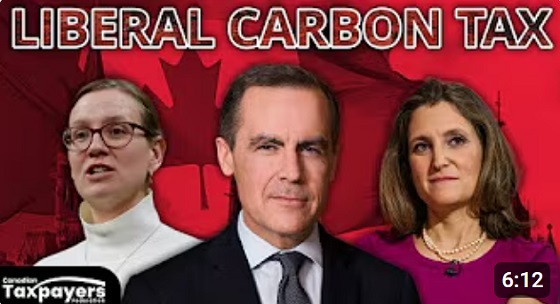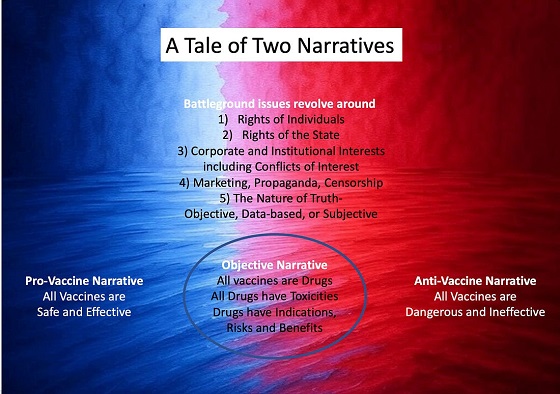National
Poilievre can pack a Rally—but can he take on the establishment, China’s influence, and the globalist elite?

Thousands braved the cold to pack Poilievre’s rally, chanting ‘We need you!’
Pierre Poilievre didn’t just hold a rally. He delivered a political earthquake. Thousands of Canadians braved the cold—minus eleven degrees, snow falling, streets covered in ice—to stand shoulder to shoulder, packed into an overflowing venue, with even more watching from spillover rooms.
And it wasn’t just a polite gathering of voters looking for a fresh face to replace Trudeau’s tired, corrupt regime. No, this was something else entirely. It was a moment where you could feel the momentum shifting. It was the kind of rally that terrifies political elites because it tells them one thing—this isn’t just a campaign anymore. It’s a movement.
Now, we’ve seen this before. Obama in 2008, Trump in 2016. The political class and their media lapdogs always pretend these moments don’t exist—right up until the moment they steamroll the establishment and change the country forever. That’s the kind of energy we saw in Ottawa. That’s the kind of political force Poilievre is sitting on.
And the real question is: does he understand just how big this is? Because right now, he is either going to ride this wave to an unstoppable victory, or he is going to let the media, the bureaucrats, and the Liberal swamp talk him into playing it safe and blowing the biggest opportunity of his life.
Let’s talk about what he got right—because he got a lot right.
First, Mark Carney got absolutely eviscerated. And not a moment too soon. For months, the Liberal establishment and their media servants have been parading this unelected banker around like some kind of messiah—as if Canadians have been crying out for a smug, carbon-tax-obsessed globalist to come and save us from ourselves.
Well, Poilievre wasn’t having it. He torched Carney’s entire phony image in a single speech.
This is a guy—let’s be very clear about who he is—who has spent his entire career making life more expensive for you while getting richer off it. A man who cheered for the carbon tax in Canada while personally investing in American coal. A man who killed pipelines here while his own company bought them in the Middle East. A man who spent years whispering in Trudeau’s ear, pushing policies that have already driven over $500 billion in investment out of this country—and now, somehow, wants you to believe he’s the guy to fix it.
It was devastating, brutal, and completely deserved. And the best part? Poilievre made it clear that if Carney wins, Canada loses.
But that wasn’t even the most important part of the speech.
The most important moment came when Poilievre didn’t just talk about the economy—he talked about Canada’s survival.
Because that’s what this is about.
And this is where Poilievre really flipped the script on the media’s latest nonsense.
For weeks now, Canada’s press has been running around like a bunch of headless chickens, shrieking that Trump’s tariffs are going to destroy us—as if the biggest economic threat to this country isn’t the people running it into the ground from within.
And instead of taking the bait, instead of playing defense, Poilievre turned the entire argument on its head.
The real problem isn’t Trump. The real problem is that Canada can’t even trade with itself.
Think about that. Canada’s biggest economic problem isn’t some tariff threat from Washington—it’s that we have more trade barriers between our own provinces than we do with the United States. That is insane. That is deliberate economic sabotage. That is the kind of bureaucratic lunacy that only a Liberal government could create.
So instead of cowering in fear about what Trump might do, Poilievre did what no Canadian politician has done in decades—he promised to tear down interprovincial trade barriers in his first 30 days in office.
And suddenly, the entire media narrative collapsed.
Why? Because if Canada is so fragile that one American president can destroy our economy with a tariff, then maybe the real problem isn’t Trump. Maybe the real problem is that Liberal policies have left us so pathetically weak that we can’t even function as a country without America’s permission.
Now that’s leadership. That’s the kind of offensive strategy Canada needs.
And then, Poilievre did it again.
He unleashed his strongest energy vision yet.
He vowed to repeal C-69, the anti-pipeline law, within 60 days. He promised to fast-track LNG projects, restart the Ring of Fire mining industry, and put an end to the foreign-funded radical environmentalists who have spent decades deliberately crippling Canada’s energy sector while collecting cash from foreign oil interests.
The crowd exploded. Because Canadians know what’s been done to them.
This country should be an energy powerhouse. Instead, under Liberal rule, we have entire provinces collapsing under green energy scams while we import oil from countries that hate us.
Poilievre knows it. Canadians know it.
And yet, for all the things he got right, there was one glaring failure.
China.
Yes, Poilievre called China a hostile power. Yes, he promised to strengthen Arctic defenses and build a new military base in Iqaluit. That’s good. That’s necessary.
But that’s not enough.
Because Trudeau didn’t just let China threaten Canada from the outside—he let them infiltrate our democracy from the inside.
And that’s where Poilievre should have gone further.
He should have hammered the Houge Inquiry—the investigation into Chinese election interference that was so damaging that Trudeau shut down Parliament to bury it.
He should have exposed how CSIS warned the Liberals about Chinese interference—and they did nothing.
He should have pledged to ban CCP-linked companies from buying Canadian land, businesses, and resources.
He should have said, plainly and directly, that Trudeau’s government was complicit in allowing a foreign dictatorship to interfere in Canada’s democracy.
But he didn’t. And that was a mistake.
Because when you are standing in front of a roaring crowd, a movement waiting for a leader to take the gloves off, that is the moment you go all in.
Poilievre is so close. He has the passion. He has the policies. He has the momentum.
But now, he has to finish the job.
That means stop holding back on China. That means stop treating this like a normal election. That means expose the entire corrupt system—not just Trudeau, but the elites who profit off Canada’s decline.
Because the crowd is ready. The movement is here. The moment is now.
The only question is: is Poilievre ready to go all the way?
Subscribe to The Opposition with Dan Knight .
For the full experience, upgrade your subscription.
Watch the entire rally here: (Pierre begins to speak at 29:00)
2025 Federal Election
MEI-Ipsos poll: 56 per cent of Canadians support increasing access to non-governmental healthcare providers

-
Most believe private providers can deliver services faster than government-run hospitals
-
77 per cent of Canadians say their provincial healthcare system is too bureaucratic
Canadians are increasingly in favour of breaking the government monopoly over health care by opening the door to independent providers and cross-border treatments, an MEI-Ipsos poll has revealed.
“Canadians from coast to coast are signalling they want to see more involvement from independent health providers in our health system,” explains Emmanuelle B. Faubert, economist at the MEI. “They understand that universal access doesn’t mean government-run, and that consistent failures to deliver timely care in government hospitals are a feature of the current system.”
Support for independent health care is on the rise, with 56 per cent of respondents in favour of allowing patients to access services provided by independent health entrepreneurs. Only 25 per cent oppose this.
In Quebec, support is especially strong, with 68 per cent endorsing this change.
Favourable views of accessing care through a mixed system are widespread, with three quarters of respondents stating that private entrepreneurs can deliver healthcare services faster than hospitals managed by the government. This is up four percentage points from last year.
Countries like Sweden and France combine universal coverage with independent providers and deliver faster, more accessible care. When informed about how these health systems run, nearly two in three Canadians favour adopting such models.
The poll also finds that 73 per cent of Canadians support allowing patients to receive treatment abroad with provincial coverage, which could help reduce long wait times at home.
Common in the European Union, this “cross-border directive” enabled 450,000 patients to access elective surgeries in 2022, with costs reimbursed as if they had been treated in their home country.
There’s a growing consensus that provincial healthcare systems are overly bureaucratic, with the strongest agreement in Alberta, B.C., and Quebec. The proportion of Canadians holding this view has risen by 16 percentage points since 2020.
Nor do Canadians see more spending as being a solution: over half say the current pace of healthcare spending in their province is unsustainable.
“Governments shouldn’t keep doubling down on what isn’t working. Instead, they should look at what works abroad,” says Ms. Faubert. “Canadians have made it clear they want to shift gears; now it’s up to policymakers to show they’re listening.”
A sample of 1,164 Canadians aged 18 and older was polled between March 24th and March 28th, 2025. The margin of error is ±3.3 percentage points, 19 times out of 20.
The results of the MEI-Ipsos poll are available here.
* * *
The MEI is an independent public policy think tank with offices in Montreal, Ottawa, and Calgary. Through its publications, media appearances, and advisory services to policymakers, the MEI stimulates public policy debate and reforms based on sound economics and entrepreneurship.
2025 Federal Election
POLL: Canadians say industrial carbon tax makes life more expensive

The Canadian Taxpayers Federation released Leger polling showing 70 per cent of Canadians believe businesses pass on most or some of the cost of the industrial carbon tax to consumers. Meanwhile, just nine per cent believe businesses pay most of the cost.
“The poll shows Canadians understand that a carbon tax on business is a carbon tax on Canadians that makes life more expensive,” said Franco Terrazzano, CTF Federal Director. “Only nine per cent of Canadians believe Liberal Leader Mark Carney’s claim that businesses will pay most of the cost of his carbon tax.
“Canadians have a simple question for Carney: How much will your carbon tax cost?”
The federal government currently imposes an industrial carbon tax on oil and gas, steel and fertilizer businesses, among others.
Carney said he would “improve and tighten” the industrial carbon tax and extend the “framework to 2035.” Carney also said that by “changing the carbon tax … We are making the large companies pay for everybody.”
The Leger poll asked Canadians who they think ultimately pays the industrial carbon tax. Results of the poll show:
- 44 per cent say most of the cost is passed on to consumers
- 26 per cent say some of the cost is passed on to consumers
- 9 per cent say businesses pay most of the cost
- 21 per cent don’t know
Among those decided on the issue, 89 per cent of Canadians say businesses pass on most or some of the cost to consumers.
“Carbon taxes on refineries make gas more expensive, carbon taxes on utilities make home heating more expensive and carbon taxes on fertilizer plants increase costs for farmers and that makes groceries more expensive,” Terrazzano said. “A carbon tax on business will push our entrepreneurs to cut production in Canada and increase production south of the border and that means higher prices and fewer jobs for Canadians.”
-

 2025 Federal Election2 days ago
2025 Federal Election2 days agoNo Matter The Winner – My Canada Is Gone
-

 2025 Federal Election2 days ago
2025 Federal Election2 days agoASK YOURSELF! – Can Canada Endure, or Afford the Economic Stagnation of Carney’s Costly Climate Vision?
-

 Alberta2 days ago
Alberta2 days agoMade in Alberta! Province makes it easier to support local products with Buy Local program
-

 2025 Federal Election2 days ago
2025 Federal Election2 days agoCSIS Warned Beijing Would Brand Conservatives as Trumpian. Now Carney’s Campaign Is Doing It.
-

 2025 Federal Election1 day ago
2025 Federal Election1 day agoInside Buttongate: How the Liberal Swamp Tried to Smear the Conservative Movement — and Got Exposed
-

 Alberta2 days ago
Alberta2 days agoProvince to expand services provided by Alberta Sheriffs: New policing option for municipalities
-

 Bruce Dowbiggin1 day ago
Bruce Dowbiggin1 day agoIs HNIC Ready For The Winnipeg Jets To Be Canada’s Heroes?
-

 Dr. Robert Malone1 day ago
Dr. Robert Malone1 day agoThe West Texas Measles Outbreak as a Societal and Political Mirror









